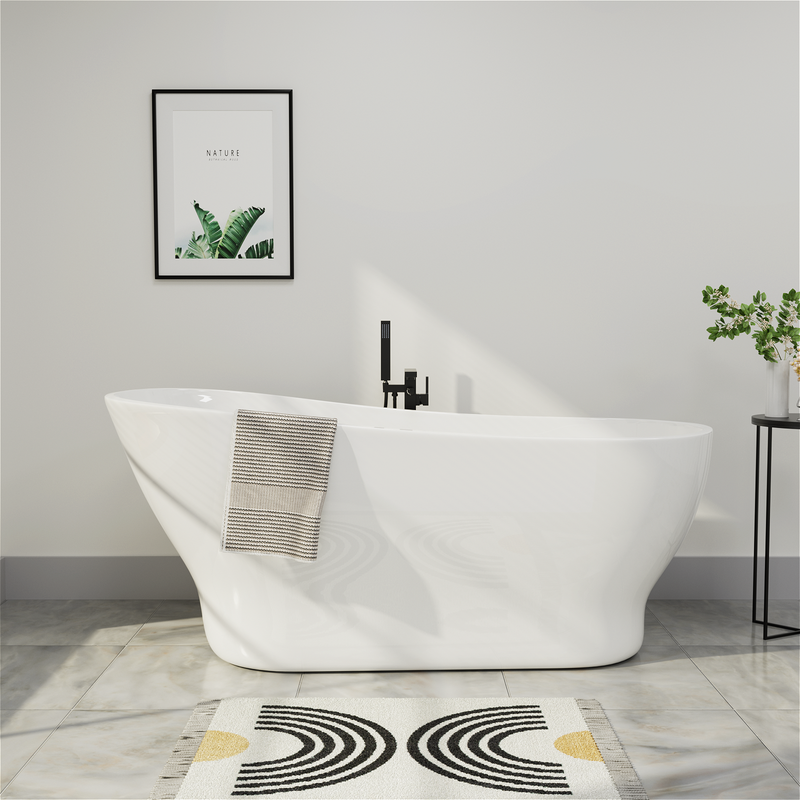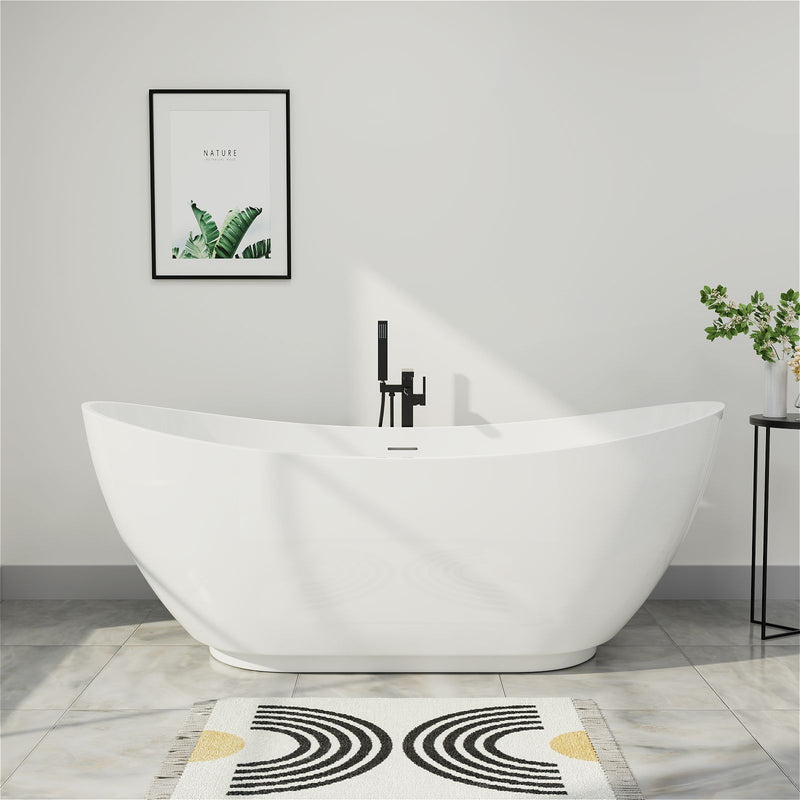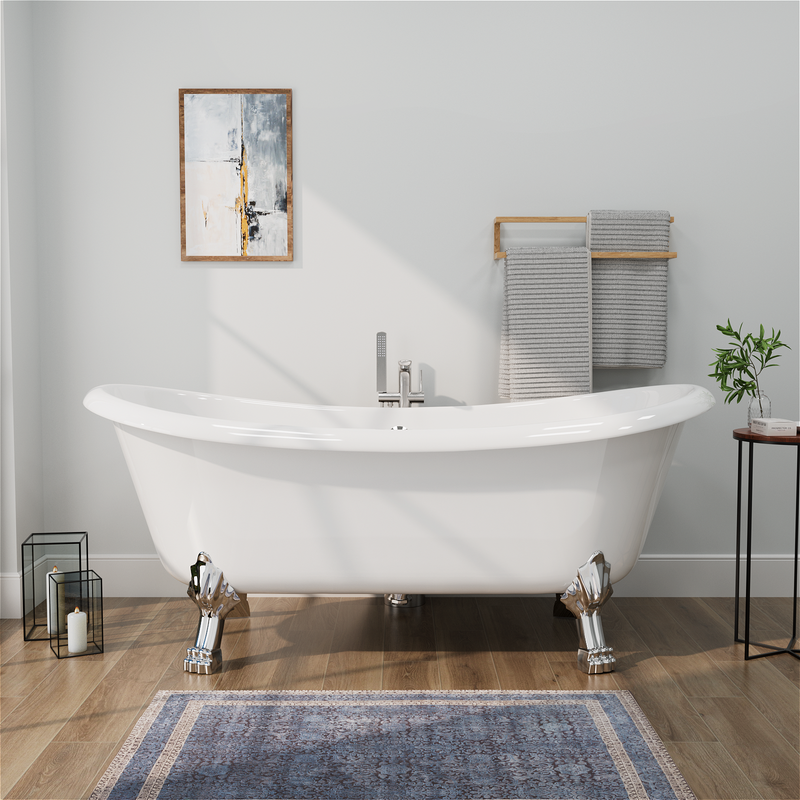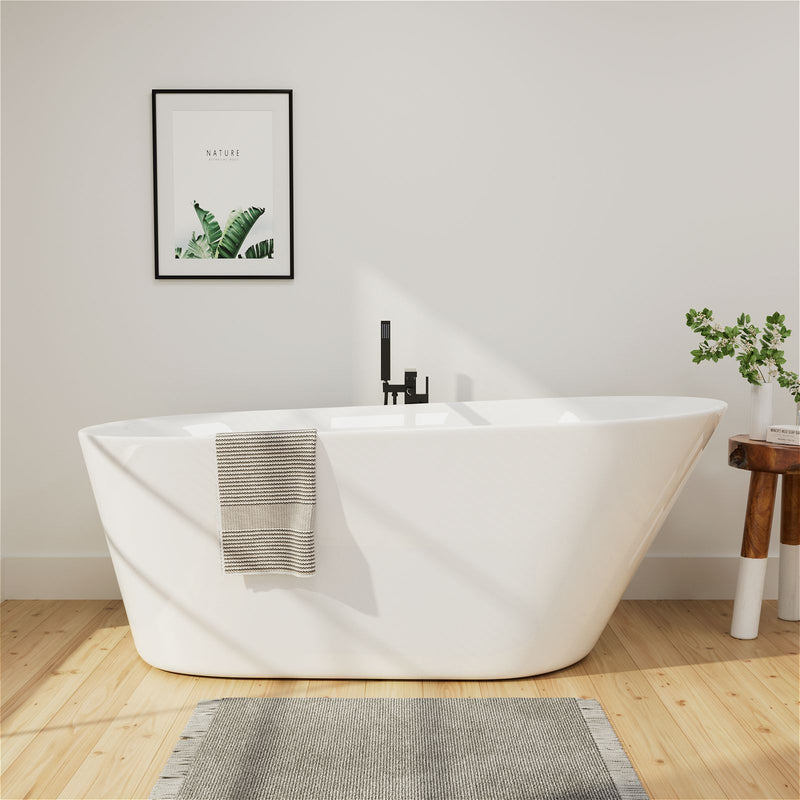Bathtub drain corrosion is a common yet frustrating issue that many homeowners face. Whether you've noticed discolored water, slow drainage, or visible rust around your drain, understanding the underlying causes and solutions is essential to maintaining a functional and appealing bathroom. Corrosion not only affects the appearance of your bathtub but can also lead to costly plumbing failures and water damage if left unaddressed. This guide explores the root causes of bathtub drain corrosion, provides step-by-step repair methods, and shares practical prevention strategies to extend the life of your plumbing system.
What Causes Bathtub Drain Corrosion?
The Role of Moisture and Oxidation
The bathroom environment is inherently humid, creating ideal conditions for corrosion to develop. When metal drain components—such as steel, iron, or low-quality chrome plating—are consistently exposed to water and oxygen, a chemical reaction known as oxidation occurs. This process leads to the formation of rust, which can weaken the drain structure over time. In areas with hard water, mineral deposits like calcium and lime can accelerate this process by trapping moisture against the metal surface, promoting faster deterioration.
Chemical Damage from Harsh Cleaners
Many homeowners turn to chemical drain cleaners to clear clogs, but these products often contain corrosive ingredients like sulfuric acid or lye. While they may provide a short-term solution for blockages, they can degrade metal pipes and drain fittings. For example, sulfuric acid can rapidly eat through metal, leading to leaks and irreversible damage. Similarly, acidic cleaning agents (e.g., those containing hydrochloric or phosphoric acid) can strip protective coatings from drain surfaces, making them more susceptible to rust.
Material Quality and Environmental Factors
The longevity of your bathtub drain depends heavily on the quality of its materials. Low-grade metals or thin electroplated coatings are prone to chipping and scratching, which allows moisture to penetrate and trigger corrosion. Environmental factors also play a role: homes in coastal regions may experience saltwater exposure, while properties with older plumbing systems might have issues like stray electrical currents or imbalanced water pH, all of which can intensify corrosion.
Risks of Ignoring a Corroded Bathtub Drain
Structural Damage and Leaks
As corrosion eats away at drain components, it can compromise the bathtub's integrity. For instance, a severely rusted drain may separate from the pipe beneath, causing water to leak into subflooring or adjacent walls. Left unchecked, this moisture can promote mold growth, rot wooden supports, and attract pests. In extreme cases, corroded cast-iron pipes may collapse, requiring extensive and expensive repairs.
Health and Hygiene Concerns
Corroded drains often accumulate rust, sludge, and bacteria, creating unhygienic conditions. Discolored water containing rust particles can stain your bathtub and pose skin irritation risks for sensitive individuals. Additionally, slow drainage caused by debris buildup can lead to standing water, which becomes a breeding ground for germs and unpleasant odors.
Reduced Plumbing Efficiency
Corrosion doesn't just affect the drain cover—it can extend into the pipes below, narrowing the passageway and impeding water flow. This restriction results in frequent clogs and slower drainage, increasing the likelihood of backups and overflows. Eventually, the drain may become completely blocked, requiring professional intervention.
Step-by-Step Repair Solutions for a Corroded Drain
Assessing the Damage
Before attempting repairs, determine the extent of the corrosion. Remove the drain cover and inspect the visible components for:
- Flaking metal or deep rust stains
- Cracks or holes in the drain bowl
- Loose or wobbly fittings
If the damage is superficial (e.g., surface rust), cleaning may suffice. However, if the drain flange or pipes are severely compromised, replacement is often the safer option.
Cleaning Surface Rust and Stains
For minor corrosion, start with gentle cleaning methods:
- Create a paste of baking soda and water or use lemon juice and salt.
- Apply the mixture to the rusted areas and scrub with a non-abrasive cloth or brush.
- Rinse thoroughly and dry.
For tough stains, a pumice stone or pumice cleaning stick may be effective, but be gentle with it to avoid scratching the surface. Always wear gloves when cleaning and ensure good ventilation.
Replacing a Severely Corroded Drain
If the drain assembly is damaged, follow these steps to replace it:
- Disassemble the Drain: Use a wrench or drain key to remove the corroded components. If screws are stuck due to rust, apply a rust-dissolving agent (e.g., phosphoric acid) or use penetrating oil to loosen them.
- Install a New Drain: Choose a high-quality, corrosion-resistant material like ABS plastic, brass, or stainless steel. Apply plumber's putty or silicone sealant around the new drain flange before securing it in place.
- Test for Leaks: Reconnect the pipes and run water to check for leaks. Tighten fittings as needed.
For complex replacements, consult a professional plumber to ensure proper installation and avoid voiding warranties.
Preventive Measures to Avoid Future Corrosion
Regular Maintenance and Cleaning
Establish a consistent cleaning routine to minimize rust formation:
- Wipe the drain area dry after each use to reduce moisture exposure.
- Use mild, pH-neutral cleaners instead of abrasive or acidic products.
- Periodically flush the drain with hot water and baking soda to dissolve mineral buildup.
Protective Coatings and Upgrades
Consider applying a water-resistant sealant around the drain flange to create a moisture barrier. If your home has old metal pipes, upgrading to modern alternatives like PVC or PEX can provide long-term corrosion resistance. Additionally, install a hair strainer or drain cover to prevent debris accumulation, which traps moisture and speeds up rusting.
Environmental Adjustments
Improve bathroom ventilation by using an exhaust fan or dehumidifier to lower humidity levels. If you have hard water, installing a water softener can reduce scale buildup and slow corrosion. Regularly inspect the drain for early signs of rust and address them promptly to avoid costly repairs.
FAQs About Bathtub Drain Corrosion
Q1: How often should I expect a bathtub drain to be replaced due to corrosion?
A: This depends heavily on water chemistry, usage, and maintenance. In many U.S. homes, a quality brass or corrosion-resistant drain may last 15 to 25 years. In harsher water conditions, replacement might arrive sooner.
Q2: Can I stop or reverse corrosion once it has started?
A: Mild surface corrosion (rust stains, minor pitting) can be removed, polished, and sealed. But deeper structural corrosion (thinning metal, leaks, pitting) generally cannot be reversed—those parts should be replaced.
Q3: Is it safe to use vinegar or baking soda to clean corroded drains?
A: Yes, in small amounts vinegar (a weak acid) and baking soda can help remove surface rust. But be cautious: if parts are severely corroded or if chemicals are left without thorough rinsing, further damage may occur. Use these as gentle remediation, not as a substitute for replacement.
Q4: Why did my replacement drain seize so soon?
A: Several possible reasons:
- Poor-quality materials or finishes
- Residual debris or corrosion grit left in the opening
- Incompatible metals causing galvanic corrosion
- Overtightening and deforming seals
- Use of harsh chemicals compromising coating
Q5: What roles do seals and gaskets play in preventing corrosion?
A: Seals and gaskets act as barriers that prevent moisture and salts from reaching junctions between metals or between metal and tub material. When these seals fail or degrade, moisture intrudes and begins corrosion at those weak points.
Q6: Can corrosion in the drain pipe (below the tub) also cause problems?
A: Absolutely. Corrosion deeper in the drain line can cause pipe leaks, clogs, or even structural damage. When replacing a drain flange, inspect or camera-inspect the downstream pipe if accessible.
Q7: Can a corroded bathtub drain be repaired without replacement?
A: Yes, superficial rust can often be removed with cleaning agents like baking soda, lemon juice, or commercial rust removers. However, if the drain has structural damage (e.g., holes or cracks), replacement is necessary to prevent leaks.
Q8: How does hard water contribute to drain corrosion?
A: Hard water contains high levels of minerals like calcium and magnesium. These deposits accumulate on metal surfaces, trapping moisture and accelerating oxidation. Over time, this leads to pitting and rust.
Q9: Are chemical drain cleaners safe to use on corroded pipes?
A: No. Harsh chemicals can worsen corrosion by eating into metal pipes and fittings. For corroded drains, opt for enzymatic cleaners or mechanical methods (e.g., a drain snake) to clear clogs.
Q10: What are the signs of a severely corroded drain?
A: Look for persistent slow drainage, rust-colored water, visible flaking or pitting around the drain opening, and moisture under the bathtub.
Q11: Which materials are most resistant to drain corrosion?
A: Stainless steel, brass, and ABS plastic are highly corrosion-resistant and ideal for drain components. Avoid low-quality coated metals, which degrade quickly.
Q12: Can I prevent drain corrosion in a humid bathroom?
A: Yes. Use a dehumidifier or ventilation fan to reduce ambient moisture. Wipe down wet surfaces after showering and apply a protective sealant around the drain periodically.
Conclusion
Bathtub drain corrosion is a manageable issue when addressed proactively. By understanding its causes—such as persistent moisture, harsh chemicals, and subpar materials—homeowners can take decisive steps to mitigate damage. Regular cleaning, prompt repairs, and preventive measures like installing corrosion-resistant drains and improving ventilation will safeguard your bathroom from costly future problems. If you encounter extensive corrosion or recurrent leaks, seek assistance from a qualified plumber to ensure a safe and lasting solution.





